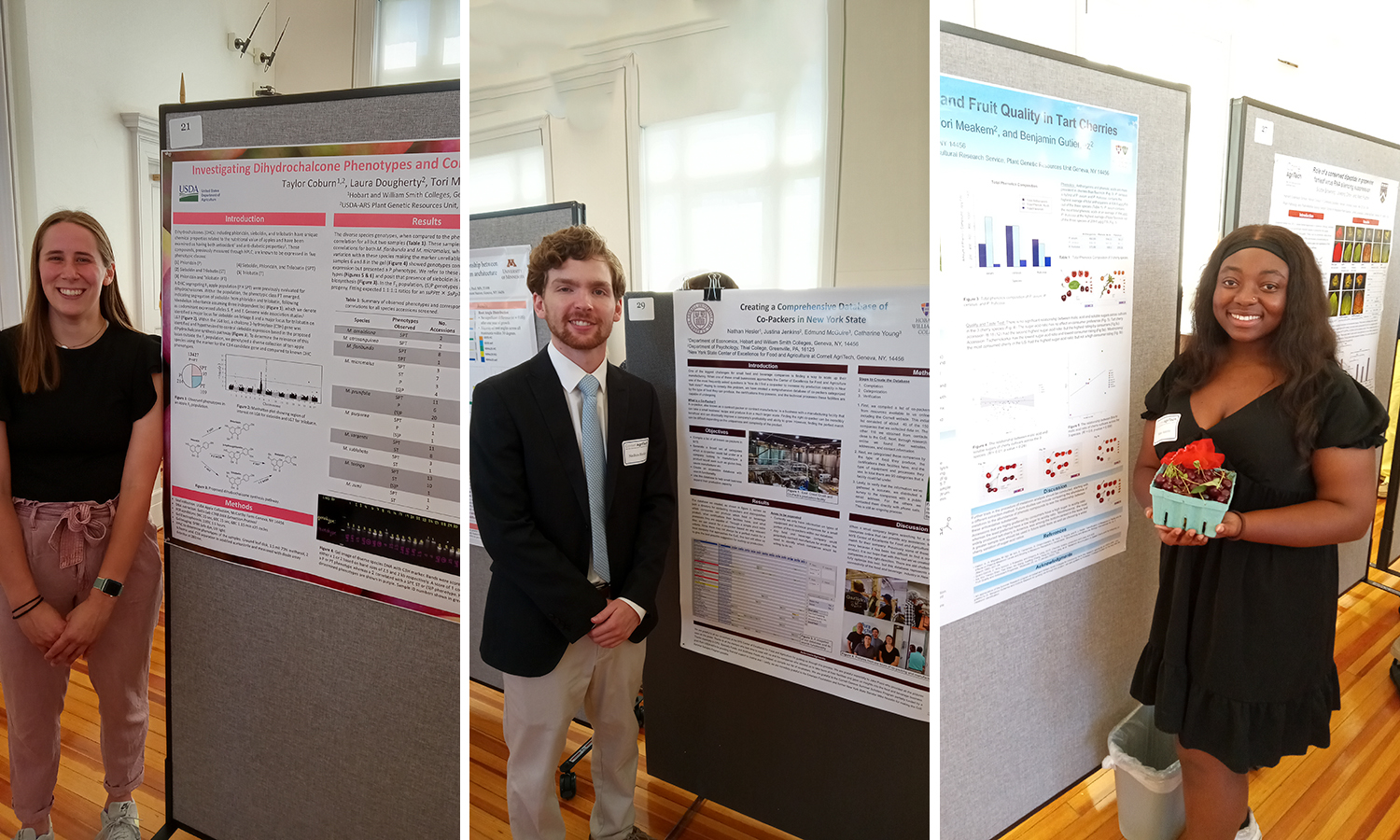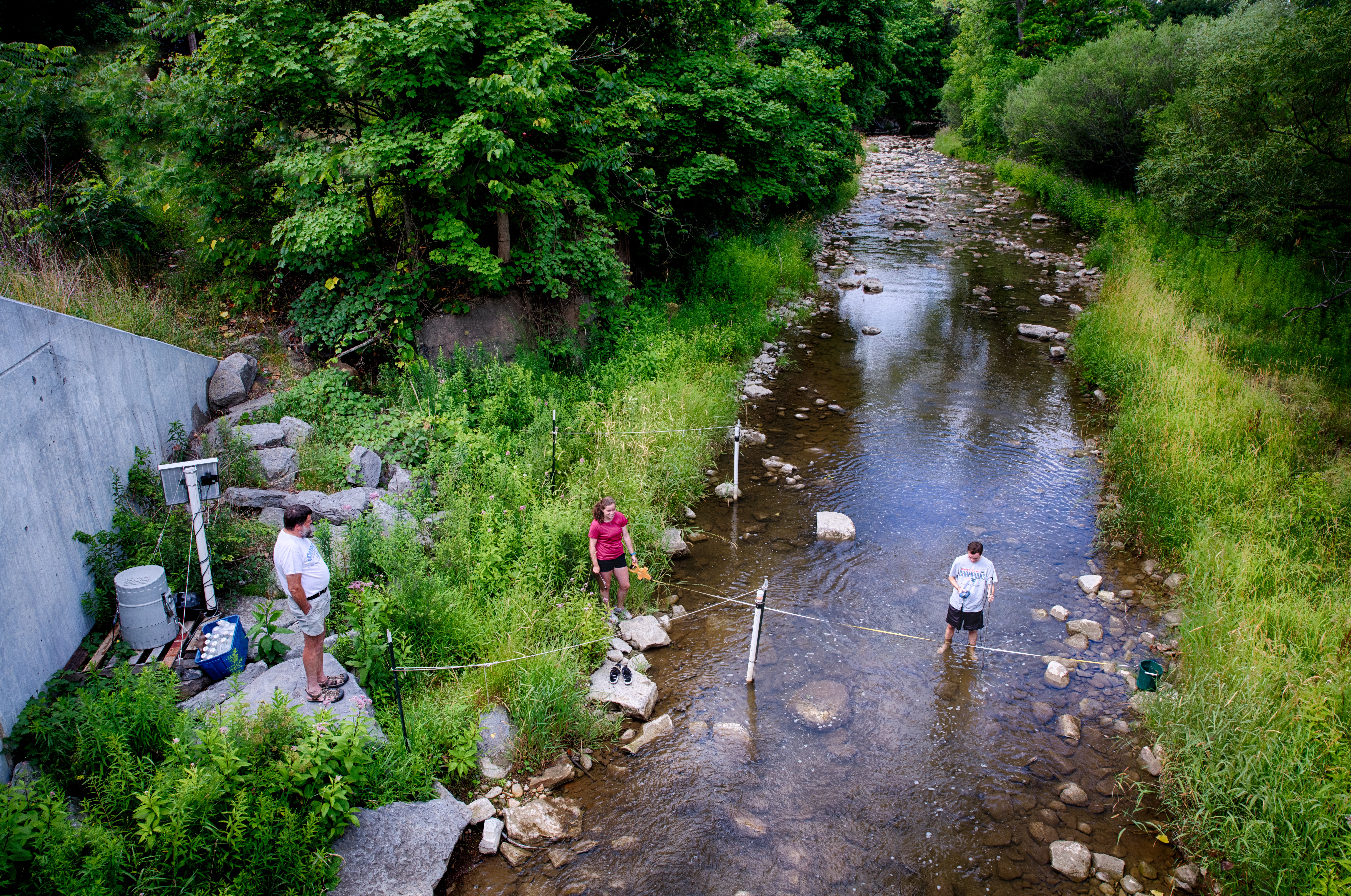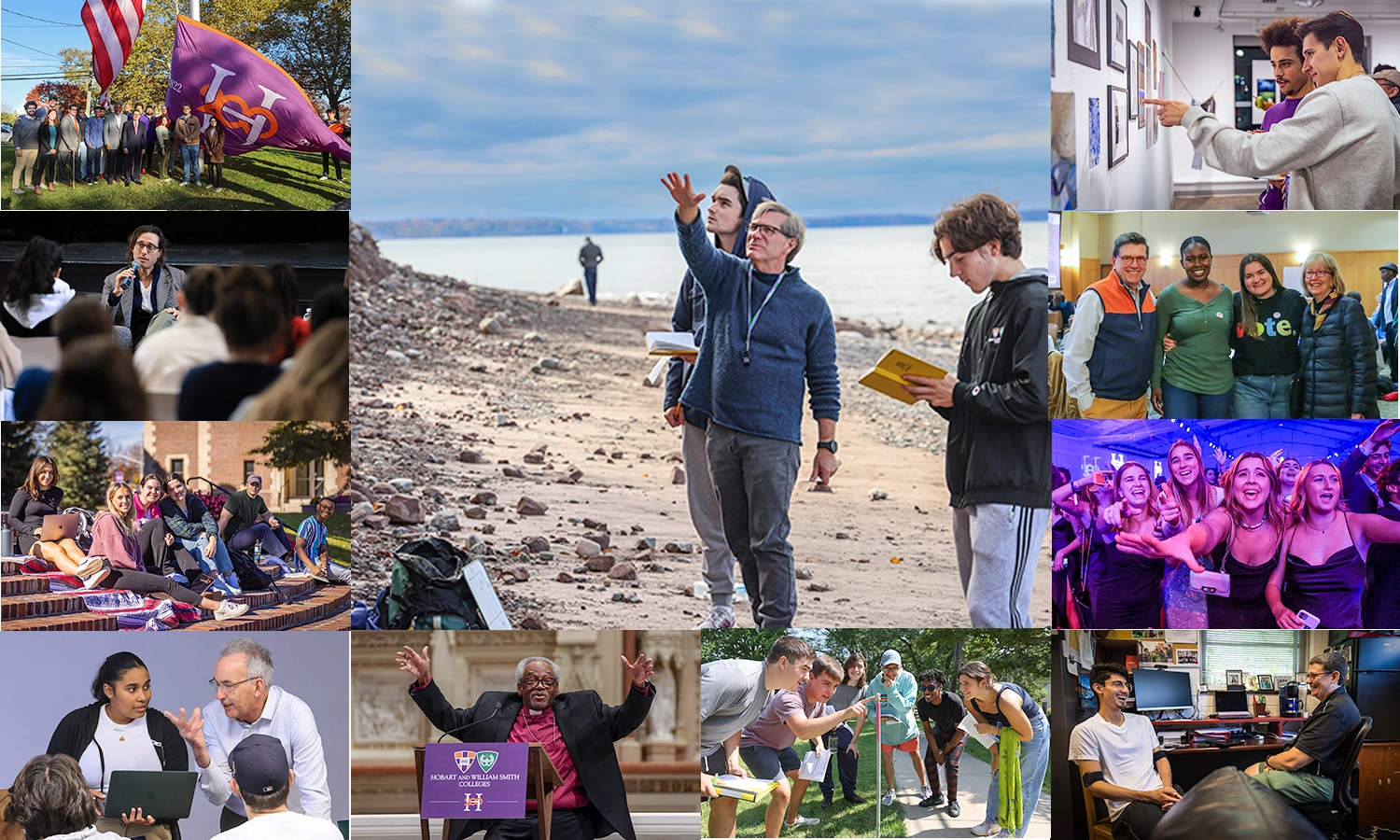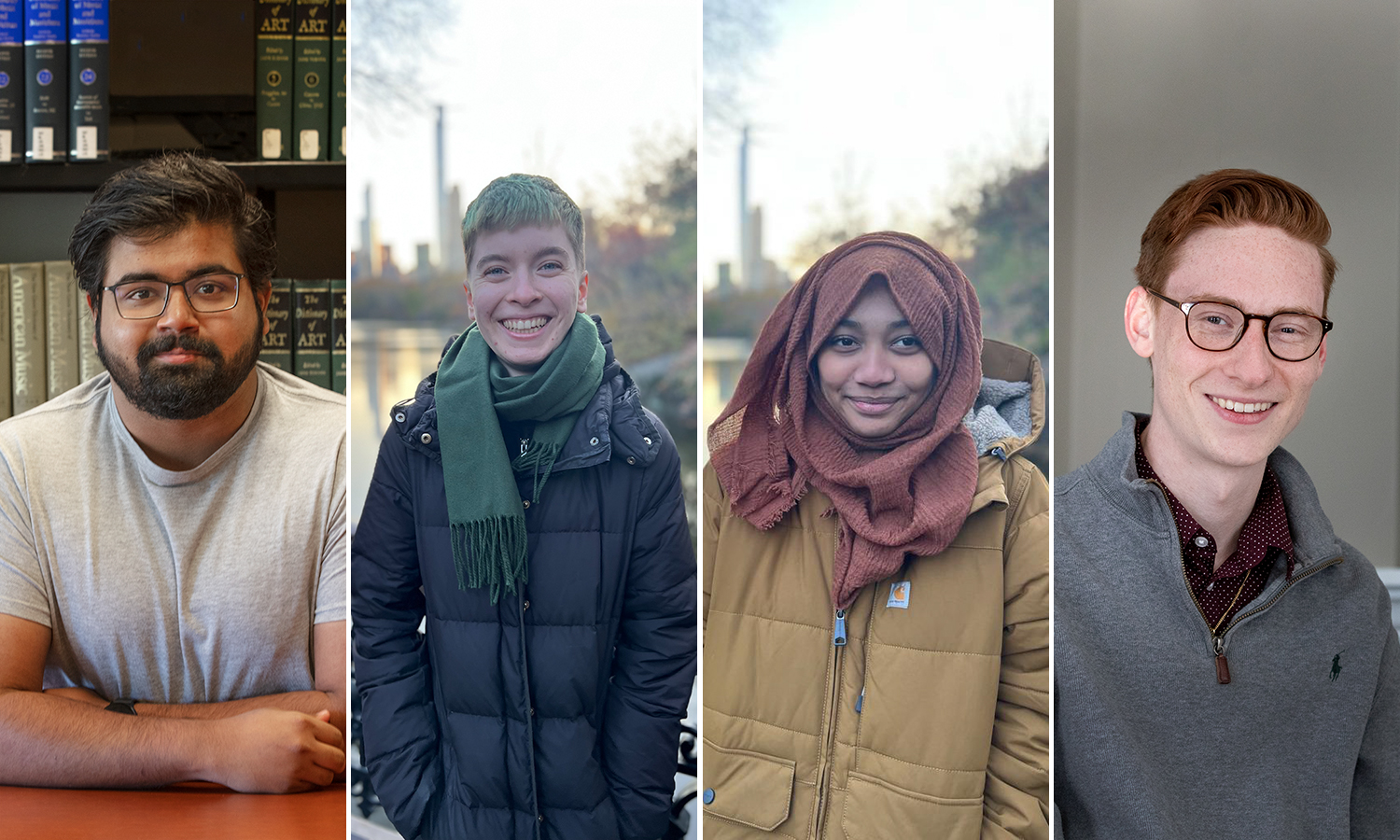
HWS News
1 September 2022 • Research • STEM Student Research at Cornell AgriTech
Several Hobart and William Smith students took to the laboratory and the field to carry out diverse experiments at the Cornell AgriTech New York State Agricultural Experiment Station in Geneva this summer.
Six students conducted a wide range of experiments and research at the Cornell AgriTech in Geneva this summer. Nana Asante ’23, Taylor Coburn ’23 and Nathan Hesler ’23 (pictured above) concluded their work offering presentations on their research. Alex Davidson ’24, Ethan Lewis ’23 and Olive McCall ’24 also participated in the program.
“Working at the Cornell AgriTech is transformative for HWS students,” says HWS Professor of Biology Patricia Mowery, who coordinates student placements at AgriTech. “They have the opportunity to be mentored by Cornell faculty, graduate students, and scientists; learn the latest scientific techniques; and work with researchers from all over the globe.”
Asante, a biology major and Africana studies minor, examined melatonin and phenolics in tart cherries. She and her team measured levels of melatonin, which aid in the sleep-wake cycle, and phenolic compounds, which help protect against chronic degenerative diseases, in samples from the USDA cherry collection in Geneva.
Asante says she gained experience in the use of high-performance liquid chromatography, as well as other lab techniques. She also got a glimpse into a career in research and “insight into the long trial and error process that goes into researching.”
“Working with my mentors,” she adds, “showed me that passion is very important in the career you choose.”
Coburn, a chemistry major and biology minor, focused on dihydrochalcone phenotypes and corresponding genotypes in several apple species. Dihydrochalcones, which include sieboldin, have unique chemical properties responsible for both the commercial and nutritional value of apples, according to her study’s summary.
“The marker tested was our hypothesized region where the chalcone-3-hydroxylase gene was present,” Coburn explains. “Based on my findings, we have confidence in that region. This was done by analyzing the genotypes of a variety of diverse apple species and looking at whether they had our hypothesized gene coding for sieboldin production.”
“This program allowed me to not only network with scientists outside of campus, but also get a taste of how science plays a role in the world outside of the classroom,” Coburn says. “The faculty at the USDA and Cornell AgriTech have been nothing but supportive of me on my academic journey.”
A biochemistry major, Davidson studied various apple tree diseases and their treatments.
“I conducted my own experiments focusing on how UV radiation can slow or stop the spread of fire blight [a plant disease] and helped other members in my lab with their own projects on powdery mildew and apple scab,” Davidson says. “I was able to learn a DNA extraction technique and other molecular biology techniques that I otherwise wouldn’t have learned.”
Davidson adds that she “loved that they allowed me to produce my own experiments and implement treatments, just as their grad students do in the lab. I learned a lot by working collaboratively with everyone—and it was a lot of fun as well.”
Lewis, also a biochemistry major, focused on seed science in a collaborative project involving several groups.
“The overall goal of the multi-year grant is to develop automated weeding systems using fluorescent dyes as a seed treatment,” Lewis explains. “My role was to design experiments that tested the features of fluorescent dyes to see if they had systemic uptake in plants and would be bright enough to see under fluorescent imaging.”
In the end, he says, he was able to conclude which dyes, buffers and dye pH were ideal for uptake and fluorescence, as well as the best soil types to use for imaging.
“Participating in this program has given me another perspective on research and the types of research that can be done in a collaborative environment,” adds Lewis. “This experience helped me to understand more deeply … how to design and implement well-constructed experiments to obtain useful and accurate results.”
A biology major, McCall helped rear a type of wasp, Ganaspis brasiliensis (GBI), to be used as a potential biocontrol for spotted wing drosophila (SWD), a fruit fly. “SWD causes damage to an assortment of small fruits, so its management is important, especially to growers affected,” McCall says. “We prepared for a wave release of GBI in the middle of July.”
She also worked on other long-term projects, including conducting bioassays that examined the use of visual cues and possible color preference in SWD females.
Thanks to the AgriTech program, McCall says, she observed “the direct impact of research in the ‘real world’” and has “a greater understanding of what it may look like to pursue academic research in a master's or Ph.D. program.”
In a departure from other students’ projects, Hesler, an economics major and environmental studies minor, worked on a guide for individuals interested in starting a small food or beverage business in New York State. The aim of the project was to create a handbook that was easy to read, yet informative, and that provided step-by-step guidance to establish such an enterprise.



